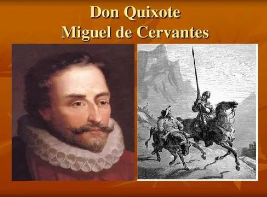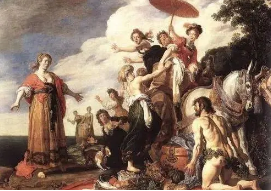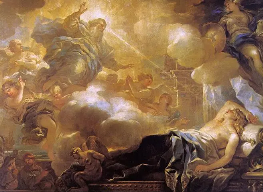Do you want to learn about Spanish culture? These literary works are not to be missed!
5 min read
Literature comes from reality,It’s a reflection of the real world,It is the epitome of The Times.As we all know, if we want to understand the culture of a country, we must start from the literature of the country.If you are interested in Spanish culture, you should not miss Spanish literature. As we all know, Spanish literature in the history of world literature is a heavy brush, reading Spanish poetry, novels, plays, not only can let you absorb the essence of the great writer, but also can let you have a deep understanding of different Spain.
poetry The Song of Cid The Song of Cid is by far the most complete preserved tour poem and also the earliest heroic epic praising heroes. It is based on a real history — the story of the famous Spanish national hero, Cide. In this work, Cide is the true embodiment of chivalry, the poem tells the story of his bravery in battle and praises the martial spirit of the Spaniards.
Solitude, Ode to the Duke of Lerma.
Both works were written by Gongola Y Argot, the founder of the famous literary school Gongoraism. He was a famous poet of the Spanish Golden Age, born into the Spanish aristocracy, studied theology and became a priest. His beau is known to us as Cervantes.
The two works I recommend today employ the technique of “pompism”. It is these exaggerated figures of speech and flowery rhetoric that launched the golden age of Spanish poetry and described the complex and rich cultural style of Spain.
“Ode to the Duke of Lerma” is the beginning of the “pompism” approach, describing the life of the king’s favourite Duke of Lerma, his achievements and some important events of the time. The poem is full of Latin words and mythological allusions, with many unusual uses and expressions.
Solitude describes the different experiences of a young man: a shipwreck, a drifter, and then a trip to sea to catch fish…… The poem uses bold metaphors, strange images, antithetical sentence patterns, exaggerated words and rare allusions, which fully shows the characteristics of “pompism” poetry.
Gypsy Ballad, Love Song.Federigo Garcia Lorca.”Gypsy Ballad” and “Love Song” are representative works of Federigo Garcia Lorca. Federigo Garcia Lorca is a representative of the “Generation of 27”, a great Spanish poet in the 20th century. He is called the “Son of Andalusia” because of the cultural features of Andalusia described in his poems.
The poems of Federigo Garcia Lorcaze, who was born into a small village landowner’s family, show the colorful folk customs of Spain. His works are mainly about the life and death of the lowly people.
The Gypsy Ballad, made famous by Federigo Garcia Lorca, was an instant success and many people even recited it.
“Love Song” is also one of his most popular works, vividly depicts the sweet and beautiful love of ordinary people, “I looked into your eyes/when I was a child and well. Your hands caressed me/gave me a sweet kiss”.
novel Don Quixote This is a pupil even know the Spanish classic “Don Quixote”, the world literature giant Cervantes created an anti-chivalric novel, it created the history of Western literature in the modern novel opening. The work has spread far beyond its own meaning, becoming one of the most famous Spanish works in the world, and has been translated into hundreds of versions.
The novel itself is a satire and attack on the popular chivalric literature in Spain at that time. With the development of society, chivalric literature has become out of date, chivalric novels are more and more shoddier, more and more vulgar, so Cervantes created this novel to destroy chivalric literature, with the knight as the protagonist, the image of the knight caricature, but also a real and comprehensive reflection of the feudal society of Spain at that time.
Lazarillo The original name was Little Lazarus of the Tomes River, the originator of picaresana novels. This work mainly tells the story of how a wandering child struggled to survive in the social background at that time, and how a little bit of social nibbling and change. From the book, we can see that the Spanish society at that time was undoubtedly rotten, the economy declined, the people became poor, a large number of bankrupt unemployed become homeless.
Lazarillo, the hero, has been wandering since he was a child. He has done a lot of jobs to make a living and served people of different professional identities and positions. Under such social background, these people are greedy and treacherous, and Lazarillo is forced to become infected with such bad habits under their influence. The novel expresses the fate of ordinary people in the social background.
The Stitch of Time Spain’s best-selling novel of 2011, with one in 30 Spaniards reading “The Stitch of Time”. The author, Maria Duenas, is a linguist whose novels are rich in material and highly structured. The book created a Spanish sales miracle without any publicity.
This novel tells the amazing story of how a seamstress becomes a female spy. Set in Spanish history, the novel has many real historical characters. Interestingly, the title of the novel is full of metaphors. Sheila, the heroine, is a seamstress, and each of her stitches represents a Morse code.
drama Don Juan Tenorio The classic of Spanish dramatic literature, known as Don Juan, is the archetypal playboy, the son of the Spanish aristocracy, a womanizer and a daredevil. He plays with various women, using his charm to deceive peasant girls and noble ladies, and eventually goes to hell.
Yangquan Village Sheep Spring Village is one of the famous works of Lope de Vega, the father of Spanish national drama. Lope de Vega was a famous poet and dramatist in Spain’s golden age. He was praised as “the phoenix of genius” and “the devil of Nature”. He was second only to Cervantes in Spain.
His work reflected the decline of Spain. Yang Quan Village is a typical example. It is a Spanish humanistic drama, which celebrates the peasants’ resistance against the tyrannical elites and expresses the resistance against class hierarchy.






